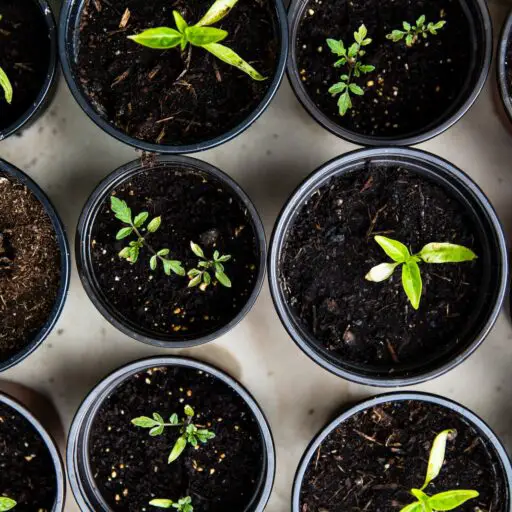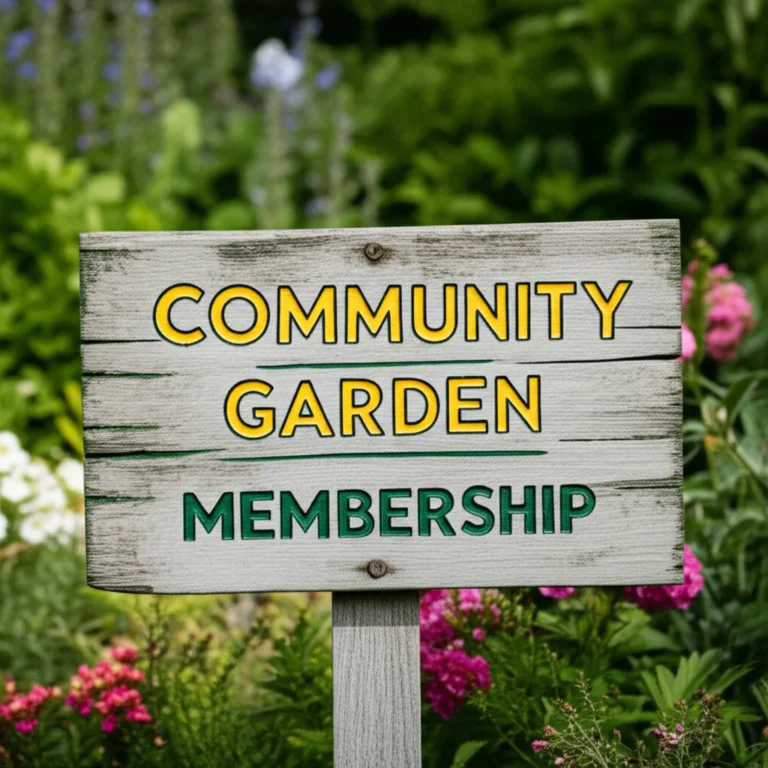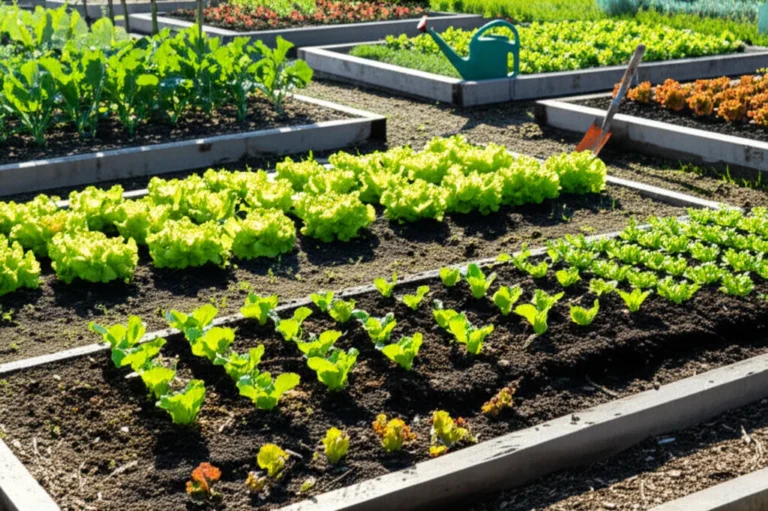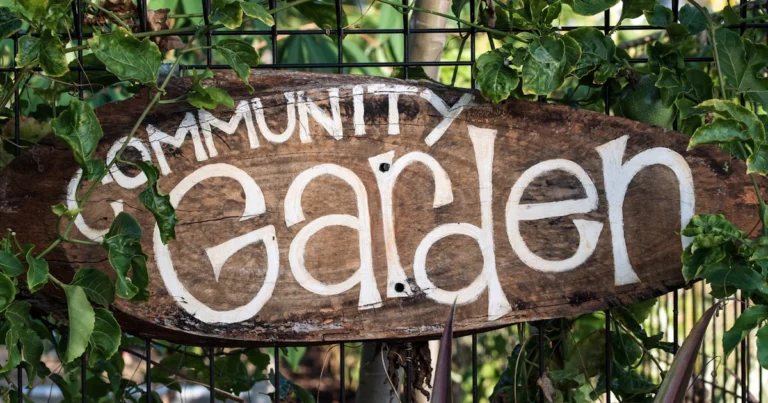Support our educational content for free when you purchase through links on our site. Learn more
Imagine this: a patch of earth in the middle of a bustling city, where strangers become friends over shared soil, laughter echoes between rows of tomatoes, and cultural stories bloom alongside sunflowers. Community gardens are more than just green spaces—they’re vibrant social hubs that cultivate connection, inclusion, and joy. But how exactly do these gardens weave their magic to bring people together?
In this article, we’ll uncover 7 surprising ways community gardens spark friendships, break down barriers, and nurture thriving neighborhoods. From mental health benefits to cultural exchanges, and from educational opportunities to festive harvest celebrations, you’ll discover why these gardens are the secret sauce to stronger, happier communities. Ready to dig in and grow together? Let’s get started!
Key Takeaways
- Community gardens foster social bonds by creating shared goals and collaborative spaces where neighbors connect naturally.
- They break down cultural and socioeconomic barriers, promoting inclusivity and mutual respect.
- Gardening together offers mental health benefits like stress reduction, mindfulness, and a sense of purpose.
- These gardens serve as educational hubs, teaching sustainability, science, and life skills.
- Overcoming challenges like pests and funding is easier with community cooperation and clear communication.
- Celebrations and events in community gardens strengthen neighborhood ties and create lasting memories.
- Starting or joining a community garden is accessible with the right tools and guidance—we recommend brands like Gorilla Carts, Fiskars, and Baker Creek Seeds for success.
Ready to equip your garden?
- Shop trusted gardening tools and supplies:
Table of Contents
- Quick Tips and Fun Facts About Community Gardens 🌱
- Rooted in History: How Community Gardens Have United Neighborhoods Through Time 🌍
- The Power of Community Gardens: Growing Connections Beyond Plants 🌿
- 7 Ways Community Gardens Spark Social Bonds and Friendships 🤝
- Breaking Barriers: How Community Gardens Foster Inclusivity and Cultural Exchange 🌎
- From Soil to Soul: Mental Health Benefits of Gardening Together 🧠💚
- Community Gardens as Educational Hubs: Teaching Sustainability and Life Skills 📚🌻
- How to Start or Join a Community Garden: A Step-by-Step Guide for Beginners 🛠️🌼
- Tools, Seeds, and Brands We Love for Community Gardening Success 🛠️🌱
- Common Challenges in Community Gardens and How to Overcome Them 🚧🌿
- Celebrating Harvests and Traditions: Community Garden Events That Bring Joy 🎉🍅
- Conclusion: Why Community Gardens Are the Secret Sauce to Thriving Neighborhoods 🌟
- Recommended Links for Community Garden Enthusiasts 🔗
- FAQ: Your Burning Questions About Community Gardens Answered ❓🌿
- Reference Links and Resources for Deep Dives 📖
Quick Tips and Fun Facts About Community Gardens 🌱
Want to know the magic behind community gardens? It’s not just about the green thumbs! Here’s a sneak peek into the world of shared gardens, filled with tips and tidbits to inspire you:
- Start Small, Dream Big: Don’t have acres of land? No problem! A few raised beds or even container gardening can spark a community spirit. Garden Design Ideas can be adapted for any space.
- Theme It Up! 🌶️🌷🍓 Create a salsa garden, a pollinator paradise, or a pizza herb patch! A shared theme adds a dash of fun and focuses your efforts.
- Compost Power: Did you know food scraps make fantastic fertilizer? Composting reduces waste and enriches your garden. Talk about a win-win!
- Bug Off Naturally: 🐞❌ Encourage beneficial insects like ladybugs to keep pests in check. A healthy ecosystem means fewer chemical interventions.
- Fun Fact: The largest community garden in the world is believed to be the Royal Botanic Gardens in Melbourne, Australia, spanning a whopping 38 hectares! 🤯
Feeling inspired? We are too! Let’s dig into the heartwarming history of how community gardens have been bringing people together for generations. Community Garden Events are a great way to experience this firsthand.
Rooted in History: How Community Gardens Have United Neighborhoods Through Time 🌍
Community gardens are more than just a trendy hobby; they’re rooted in a rich history of resilience, social change, and a deep-seated human need to connect with nature and each other. Let’s take a trip down memory lane to see how these green spaces have blossomed through time:
Ancient Origins: From Sustenance to Social Hubs
- Early Civilizations: Imagine bustling marketplaces nestled beside shared plots of fertile land. Archaeological evidence suggests community gardening practices were alive and well in ancient Mesopotamia, Egypt, and the Americas. These gardens weren’t just about food security; they were vibrant social hubs where people gathered, shared knowledge, and celebrated harvests together.
- Medieval Times: Monasteries in Europe cultivated medicinal herb gardens, sharing their bounty with surrounding communities. These gardens became centers of learning and healing, fostering a sense of collective well-being.
Modern Day Movements: Greening Cities and Empowering Communities
- 19th Century: The Industrial Revolution brought about rapid urbanization, often leaving communities disconnected from nature and struggling with poverty. “Allotment gardens” emerged in England, providing working-class families with a space to grow food and find respite from crowded city life.
- World Wars I & II: Remember those iconic “Victory Gardens?” During times of war and economic hardship, communities rallied together to plant gardens, ensuring food security and boosting morale on the home front.
- The 1960s & 70s: The environmental movement brought renewed interest in sustainable living and community-based initiatives. Urban gardening gained traction, transforming vacant lots into green oases and fostering a sense of neighborhood pride.
Community Gardens Today: Cultivating More Than Just Food
Today, community gardens continue to flourish as vibrant spaces that address a multitude of social, environmental, and health concerns. They’ve evolved to become:
- Food Security Champions: Providing access to fresh, affordable produce, especially in underserved communities classified as food deserts.
- Environmental Stewards: Promoting sustainable practices like composting, water conservation, and organic gardening, contributing to a healthier planet.
- Social Glue: Breaking down barriers between neighbors, fostering intergenerational connections, and strengthening community bonds.
From ancient agricultural practices to modern-day movements, community gardens have always been about more than just growing food. They’ve been a testament to the power of collective action, resilience, and the deep human need to connect with nature and each other. What are 5 benefits of a community garden? Learn more about the positive impact these green spaces have on individuals and communities alike.
The Power of Community Gardens: Growing Connections Beyond Plants 🌿
We’ve all heard the saying, “It takes a village.” Well, community gardens are like mini villages, sprouting connections as strong as the roots beneath our feet. But how exactly do these green spaces weave their magic? Let’s explore the heartwarming ways community gardens cultivate a sense of belonging:
1. Shared Purpose, Shared Success: 🤝
Imagine this: you’re elbow-deep in soil, planting seeds alongside your neighbor. You swap stories, gardening tips, and maybe even a prized tomato seedling. As you nurture your plants, you’re also nurturing a shared sense of purpose and accomplishment. This collaborative spirit extends beyond the garden fence, fostering a sense of camaraderie that strengthens community bonds.
2. Breaking Bread, Building Bridges: 🥖
There’s something truly special about sharing a meal made with ingredients grown with love by your community. Community gardens often host potlucks and harvest festivals, transforming fresh produce into culinary delights that bring people together. These shared meals create a space for conversations, laughter, and a deeper appreciation for the bounty of the earth and the hands that helped grow it.
3. From Strangers to Garden Buddies: 👋
In a world dominated by screens and busy schedules, community gardens offer a refreshing change of pace. They provide a welcoming space to slow down, connect with nature, and strike up conversations with people you might not otherwise meet. Whether you’re a seasoned gardener or a curious newbie, there’s a place for you in the garden.
4. A Tapestry of Cultures and Generations: 👵👦
Community gardens are like microcosms of our diverse world, bringing together people from all walks of life. You’ll find seasoned gardeners sharing their wisdom with eager newcomers, young families teaching their children about the wonders of nature, and people from different cultural backgrounds bonding over shared love for the land. This intergenerational and multicultural exchange enriches the garden’s tapestry, fostering understanding and appreciation for our differences.
5. Nurturing More Than Just Plants: 💚
The benefits of community gardens extend far beyond fresh produce and blooming flowers. They provide a sense of belonging, purpose, and connection that nourishes the soul as much as gardening nourishes the body. In a world that often feels isolating, these green spaces remind us of the power of community and the simple joys of connecting with nature and each other.
Ready to experience the magic of community gardening firsthand? Stay tuned for our upcoming sections, where we’ll delve into the practicalities of starting or joining a community garden, explore the surprising mental health benefits of gardening together, and uncover the secrets to successful community gardening!
7 Ways Community Gardens Spark Social Bonds and Friendships 🤝
Remember that warm and fuzzy feeling you get when you share a freshly baked pie with a neighbor? Community gardens are like that, but with more dirt, sunshine, and maybe a few friendly earthworms! They’re like friendship factories disguised as green spaces, churning out connections faster than you can say “zucchini bread.”
Here are 7 ways community gardens cultivate friendships and strengthen community ties:
- Side-by-Side Sowing, Shoulder-to-Shoulder Support: There’s something inherently bonding about working together towards a common goal. Whether you’re tilling soil, planting seeds, or troubleshooting a pesky aphid infestation, community gardens provide ample opportunities to roll up your sleeves and get your hands dirty alongside your neighbors. This shared experience fosters a sense of camaraderie and mutual support, transforming strangers into garden buddies.
- Tool Talk and Seed Swaps: Forget online forums; community gardens are the OG social networks! Need to borrow a trowel? Have extra tomato seedlings to share? Chances are, your fellow gardeners have got you covered. These casual exchanges foster a culture of sharing and reciprocity, strengthening community bonds one seed packet and gardening tool at a time.
- Harvest Celebrations and Potluck Parties: Remember those heartwarming scenes from movies where neighbors gather for potlucks and celebrations? Community gardens bring those scenes to life! From end-of-season harvest festivals to impromptu pizza nights fueled by garden-fresh ingredients, these gatherings create a space for laughter, shared meals, and lasting memories.
- Learning from Green Thumb Gurus: Every community garden has its resident gardening gurus, those seasoned veterans with a wealth of knowledge and a knack for coaxing life from the soil. These individuals often become mentors, sharing their expertise and passion with newcomers, fostering a sense of intergenerational connection and shared learning.
- Kids in the Garden, Community in Bloom: Picture this: children giggling as they chase butterflies, their tiny hands carefully planting seeds, their faces lit up with wonder as they witness the magic of growth. Community gardens provide a safe and engaging space for families to connect with nature and each other. Children learn valuable life lessons about responsibility, teamwork, and the environment, while parents forge friendships and build a strong sense of community.
- Breaking Down Barriers, One Seedling at a Time: Community gardens are inherently inclusive spaces, welcoming people from all walks of life. Regardless of age, background, or gardening experience, everyone is united by a shared love for the land and a desire to connect with their community. This diversity fosters understanding, breaks down social barriers, and creates a sense of belonging for all.
- From Garden Plots to Lasting Friendships: The beauty of community gardens is that they’re more than just places to grow food; they’re fertile ground for cultivating friendships that extend far beyond the garden fence. The shared experiences, mutual support, and genuine connections forged in these green spaces often blossom into lasting friendships, enriching the lives of individuals and strengthening the fabric of the community.
Ready to experience the transformative power of community gardening? Check out our upcoming sections for tips on starting or joining a community garden in your area and discover the surprising mental health benefits of getting your hands dirty with your neighbors!
Breaking Barriers: How Community Gardens Foster Inclusivity and Cultural Exchange 🌎
Community gardens are like vibrant tapestries, woven together by the diverse hands that tend them. They’re spaces where language barriers fade amidst the shared language of plants, where cultural traditions intertwine like climbing vines, and where people from all walks of life come together to nurture something beautiful.
Here’s how community gardens break down barriers and foster inclusivity:
1. A Welcoming Space for All:
Imagine a place where your age, background, or gardening expertise don’t matter. Community gardens are inherently welcoming spaces, embracing diversity as a strength. Whether you’re a seasoned gardener, a curious newbie, or simply looking for a sense of belonging, you’ll find a home in the garden.
2. Bridging Cultures Through Shared Harvest:
Food has a magical way of bringing people together, and community gardens are like culinary melting pots. You’ll find neighbors sharing traditional recipes, exchanging seeds from their homelands, and bonding over the flavors of their cultures. This exchange of knowledge and traditions enriches the garden’s tapestry, fostering appreciation for our differences.
3. Language of Plants: A Universal Tongue:
You don’t need to speak the same language to communicate the joy of a ripe tomato or the satisfaction of a well-weeded bed. Gardening transcends language barriers, creating a space for nonverbal communication and shared understanding. A smile, a nod, a helping hand—these gestures speak volumes in the garden.
4. Breaking Down Social Barriers:
In a world often divided, community gardens offer a refreshing antidote to isolation. They provide a neutral ground where people from diverse socioeconomic backgrounds, cultures, and generations can come together, fostering a sense of community that extends beyond the garden fence.
5. Empowering Marginalized Communities:
Community gardens can be particularly empowering for marginalized communities who may face barriers to accessing fresh, healthy food. By providing a space to grow their own produce, these gardens promote food sovereignty, improve health outcomes, and foster a sense of agency.
6. Celebrating Differences, Cultivating Unity:
Community gardens thrive on the unique contributions of each individual. They’re spaces where differences are celebrated, where cultural traditions are honored, and where people from all walks of life come together to create something beautiful and meaningful.
7. Building Bridges, One Seed at a Time:
In a world often characterized by division, community gardens offer a powerful reminder that we’re more alike than we are different. By fostering inclusivity, celebrating diversity, and breaking down barriers, these green spaces cultivate a sense of unity and belonging that extends far beyond the garden fence.
Ready to experience the transformative power of community gardening? Stay tuned for our upcoming sections, where we’ll explore the mental health benefits of gardening together, provide practical tips for starting or joining a community garden, and share inspiring stories of how these green spaces are making a difference in communities around the world.
From Soil to Soul: Mental Health Benefits of Gardening Together 🧠💚
We all know that feeling: sinking your hands into the cool earth, the sun warming your face, the gentle breeze carrying the scent of blooming flowers. Gardening, even on a small scale, can be incredibly therapeutic. Now, imagine multiplying that feeling by a community of like-minded individuals. That’s the magic of community gardening for mental well-being!
1. Stress Buster Extraordinaire:
Let’s face it, life can be a whirlwind of deadlines, responsibilities, and digital overload. Community gardens offer a welcome respite from the daily grind, a chance to disconnect from screens and reconnect with nature. Studies by the American Horticultural Therapy Association have shown that spending time in nature can lower cortisol levels (the stress hormone), reduce anxiety, and improve overall mood.
2. Green Exercise for Body and Mind:
Forget the gym; community gardens are nature’s playground! Digging, planting, weeding—these activities provide a gentle workout that benefits both body and mind. The physical exertion releases endorphins, those feel-good chemicals that have mood-boosting effects. Plus, the rhythmic and repetitive motions of gardening can be incredibly meditative, calming racing thoughts and promoting a sense of peace.
3. Cultivating Mindfulness, One Seed at a Time:
Gardening requires patience, observation, and a deep connection to the present moment. As you nurture your plants, you’re also nurturing your own sense of mindfulness. This focus on the here and now can help quiet the constant chatter of the mind, reducing anxiety and promoting a sense of calm.
4. A Sense of Purpose and Accomplishment:
There’s something incredibly rewarding about watching a tiny seed transform into a vibrant plant laden with fruits, vegetables, or flowers. Community gardens provide a tangible sense of accomplishment, boosting self-esteem and fostering a sense of purpose. This feeling of accomplishment is amplified when shared with a community, as you celebrate each other’s successes and offer support during challenges.
5. Social Connections That Nourish the Soul:
Loneliness and social isolation are growing concerns in our increasingly digital world. Community gardens offer a powerful antidote, providing a welcoming space to connect with like-minded individuals, share stories, exchange gardening tips, and forge meaningful friendships. These social connections are essential for mental well-being, fostering a sense of belonging and reducing feelings of isolation.
6. Community Support When You Need It Most:
Life has its ups and downs, and sometimes we need a helping hand or a listening ear. Community gardens often become informal support networks, where neighbors look out for each other, offer encouragement during challenging times, and celebrate each other’s triumphs. This sense of community support can be incredibly comforting, providing a safety net during difficult times.
7. From Garden to Table, Nourishing Body and Mind:
There’s nothing quite like the taste of fresh, homegrown produce. Community gardens provide access to nutritious food, which is essential for both physical and mental health. Knowing that you’ve played a role in growing your own food can be incredibly empowering and contribute to a sense of well-being.
Ready to experience the therapeutic benefits of community gardening? Stay tuned for our upcoming sections, where we’ll provide practical tips for starting or joining a community garden, explore the environmental benefits of these green spaces, and share inspiring stories of how community gardens are transforming lives and communities around the world.
Community Gardens as Educational Hubs: Teaching Sustainability and Life Skills 📚🌻
Community gardens are more than just patches of green; they’re living classrooms bursting with opportunities to learn about sustainability, ecology, and essential life skills. These vibrant spaces bring textbook knowledge to life, fostering a deep appreciation for the interconnectedness of all living things.
1. Seed to Supper: A Crash Course in Food Systems:
Ever wondered about the journey your food takes from farm to plate? Community gardens offer a firsthand look at the entire food cycle, from planting seeds and nurturing seedlings to harvesting produce and transforming it into delicious meals. This hands-on experience fosters a deeper understanding of where our food comes from, the challenges faced by farmers, and the importance of supporting local and sustainable food systems.
2. Eco-Warriors in the Making:
Community gardens are like mini ecosystems, teeming with biodiversity and opportunities to learn about the delicate balance of nature. Gardeners of all ages can discover the fascinating world of pollinators, beneficial insects, composting, and the importance of protecting our planet. These experiences cultivate environmental stewardship, inspiring future generations to become eco-conscious citizens.
3. Hands-on Science Experiments:
Forget sterile labs; community gardens are the ultimate outdoor classrooms for hands-on science experiments! Gardeners can experiment with different soil compositions, observe the life cycle of plants, and learn about the fascinating world of microorganisms. These real-world applications of scientific principles make learning fun and engaging, sparking a lifelong love of science.
4. Problem-Solving and Critical Thinking:
Gardening is full of challenges, from pesky pests and unpredictable weather to nutrient deficiencies and plant diseases. These challenges provide valuable opportunities to develop problem-solving and critical thinking skills. Gardeners learn to observe, analyze, and adapt, drawing on their knowledge and the support of their community to find solutions.
5. Patience, Perseverance, and the Art of Delayed Gratification:
In a world of instant gratification, gardening teaches us the importance of patience, perseverance, and the beauty of delayed gratification. From planting a seed to harvesting its bounty, gardening is a journey that unfolds over time, requiring dedication, observation, and a willingness to embrace the natural rhythms of growth.
6. Teamwork Makes the Dream Work:
Community gardens are collaborative endeavors, requiring individuals to work together towards a common goal. From dividing tasks and sharing resources to supporting each other through challenges and celebrating successes, community gardening fosters teamwork, communication, and a sense of shared responsibility.
7. Cultivating Confidence and a Sense of Empowerment:
There’s something incredibly empowering about growing your own food and contributing to the well-being of your community. Community gardens provide a sense of agency, allowing individuals to take control of their food sources, connect with nature, and make a tangible difference in their communities.
Ready to embark on a journey of learning and growth? Stay tuned for our upcoming sections, where we’ll provide practical tips for starting or joining a community garden, explore the mental health benefits of these green spaces, and share inspiring stories of how community gardens are transforming lives and communities around the world.
How to Start or Join a Community Garden: A Step-by-Step Guide for Beginners 🛠️🌼
Ready to dig into the wonderful world of community gardening but not sure where to start? Don’t worry; we’ve got you covered! Whether you’re a seasoned green thumb or a complete newbie, this step-by-step guide will help you navigate the process of starting or joining a community garden and embark on a rewarding journey of growth, connection, and fresh produce.
Starting a Community Garden: From Seed of an Idea to Flourishing Oasis
Starting a community garden from scratch can seem daunting, but with a little planning, collaboration, and a whole lot of enthusiasm, you can transform a vacant lot into a thriving community hub. Here’s how:
- Gather Your Gardening Gang: Every successful community garden starts with a passionate group of individuals who share a love for gardening and a vision for a greener, more connected community. Reach out to neighbors, friends, family members, and local organizations to gauge interest and assemble a core team of dedicated volunteers.
- Scout the Perfect Location: Finding the right spot for your community garden is crucial. Look for a sunny location with access to water and good drainage. Consider factors like accessibility, visibility, and proximity to potential gardeners. Once you’ve identified a potential site, contact the landowner (city, church, school, etc.) to inquire about leasing or using the space.
- Navigate the Legal Landscape: Before you start digging, it’s essential to navigate any legal requirements, permits, or regulations. Contact your local municipality to inquire about zoning laws, water usage guidelines, and any necessary permits for community gardens.
- Develop a Garden Governance Structure: To ensure the long-term sustainability of your community garden, it’s crucial to establish a clear governance structure. This might involve creating bylaws, electing a garden council, and establishing communication channels to address any issues or make decisions collectively.
- Secure Funding and Resources: Starting a community garden often requires some initial investment for tools, seeds, soil amendments, and infrastructure. Explore funding options like grants from local organizations, crowdfunding campaigns, or partnerships with businesses that align with your mission.
- Design Your Dream Garden: Now for the fun part! Work together to design a garden layout that meets the needs and preferences of your community. Consider factors like accessibility, water conservation, companion planting, and the types of fruits, vegetables, herbs, and flowers you want to grow.
- Get Your Hands Dirty: With a plan in place and resources secured, it’s time to roll up your sleeves and start transforming your vision into reality! Organize work parties, assign tasks, and celebrate each milestone as you build your community garden together.
Joining an Existing Community Garden: Plugging into a Thriving Ecosystem
If starting a garden from scratch feels overwhelming, joining an existing community garden is a fantastic way to reap the benefits of shared gardening without the logistical hurdles. Here’s how to find and join a community garden in your area:
- Tap into Local Networks: Reach out to local gardening clubs, environmental organizations, community centers, or even your city’s parks and recreation department to inquire about existing community gardens in your area.
- Harness the Power of the Internet: Online resources like the American Community Gardening Association and The Garden Network offer directories and maps of community gardens across the country.
- Spread the Word: Let your neighbors, friends, and family know that you’re interested in joining a community garden. Word-of-mouth can be a powerful tool for connecting with existing gardens in your area.
- Attend a Garden Meeting or Work Party: Once you’ve identified a potential garden, attend a meeting or work party to get a feel for the community, learn about their gardening practices, and see if it’s the right fit for you.
- Inquire About Membership: Most community gardens have a membership process that might involve paying a small fee, attending orientation sessions, and agreeing to abide by the garden’s rules and guidelines.
Tips for Community Gardening Success:
Whether you’re starting a new garden or joining an existing one, here are a few tips to ensure a harmonious and fruitful experience:
- Communication is Key: Establish clear communication channels within your gardening community to share updates, address concerns, and make decisions collectively.
- Embrace Diversity: Community gardens thrive on diversity! Welcome gardeners of all ages, backgrounds, and experience levels, and create an inclusive environment where everyone feels valued and respected.
- Share the Bounty: Celebrate your harvests together by organizing potlucks, sharing surplus produce with neighbors in need, or donating to local food banks.
- Learn and Grow Together: Embrace the opportunity to learn from experienced gardeners, share your knowledge with newcomers, and foster a culture of continuous learning and growth.
Starting or joining a community garden is a rewarding experience that nourishes the body, mind, and soul. It’s an opportunity to connect with nature, build community, and cultivate a more sustainable and fulfilling way of life. So, grab your gardening gloves, gather your community, and get ready to dig into the joys of community gardening!
Tools, Seeds, and Brands We Love for Community Gardening Success 🛠️🌱
A successful community garden is built on collaboration, shared knowledge, and of course, the right tools and resources! We’ve gathered our favorite tools, seeds, and brands that make community gardening a breeze, whether you’re just starting out or looking to level up your gardening game.
Essential Tools for Community Garden Warriors:
- Durable Wheelbarrows: Hauling compost, mulch, and harvested goodies is a breeze with a sturdy wheelbarrow. We recommend the Gorilla Carts Poly Garden Dump Cart for its impressive capacity and rugged build.
- 👉 CHECK PRICE on: Amazon | Walmart | Gorilla Carts Official Website
- Ergonomic Hand Tools: Keep your hands happy and your garden thriving with comfortable, high-quality hand tools. We love the Fiskars Ergo Garden Tool Set for its durable construction and ergonomic design.
- 👉 CHECK PRICE on: Amazon | Walmart | Fiskars Official Website
- Efficient Watering Systems: Conserve water and keep your plants hydrated with a reliable watering system. The Dramm ColorStorm Premium Rubber Hose is our top pick for its durability, flexibility, and kink-resistant design.
- 👉 CHECK PRICE on: Amazon | Walmart | Dramm Official Website
- Sturdy Garden Hoses: For watering large areas or reaching distant plots, a sturdy garden hose is a must-have. We recommend the Gilmour Flexogen Lightweight Hose for its durability, flexibility, and kink-resistant design.
- 👉 CHECK PRICE on: Amazon | Walmart | Gilmour Official Website
- Versatile Garden Carts: Transporting tools, soil, and harvested produce is a breeze with a versatile garden cart. We recommend the Mac Sports Collapsible Folding Wagon for its sturdy construction, spacious design, and easy maneuverability.
- 👉 CHECK PRICE on: Amazon | Walmart | Mac Sports Official Website
Seed Companies That Sow Success:
- Baker Creek Heirloom Seeds: Known for their vast selection of heirloom and open-pollinated seeds, Baker Creek offers a treasure trove of unique and flavorful varieties perfect for community gardens.
- Seed Savers Exchange: Dedicated to preserving heirloom varieties, Seed Savers Exchange offers a wide selection of seeds, as well as educational resources and a vibrant community of gardeners.
- High Mowing Organic Seeds: Committed to organic practices, High Mowing offers a wide variety of certified organic seeds, perfect for community gardens focused on sustainability.
Brands We Trust for Community Gardening:
- Espoma Organic: For enriching your soil naturally, we recommend Espoma’s line of organic fertilizers, soil amendments, and pest control solutions.
- Gardener’s Supply Company: From raised garden beds and trellises to tools and watering systems, Gardener’s Supply Company offers a comprehensive selection of high-quality gardening supplies.
- Burpee: A trusted name in gardening for over a century, Burpee offers a wide variety of seeds, plants, and gardening supplies, perfect for community gardens of all sizes.
Sharing is Caring: Building a Community Tool Shed
Creating a communal tool shed is a fantastic way to pool resources, reduce waste, and foster a sense of shared ownership in your community garden. Encourage gardeners to donate gently used tools or contribute to a fund for purchasing new equipment. Label everything clearly, establish a borrowing system, and celebrate the spirit of collaboration that makes community gardening so special.
Remember, the most important ingredient in any successful community garden is the passion and dedication of its gardeners. By equipping yourselves with the right tools, resources, and a shared love for growing, you can create a thriving green space that nourishes both body and soul.
Common Challenges in Community Gardens and How to Overcome Them 🚧🌿
Community gardens, like any thriving ecosystem, face their share of challenges. From pesky pests and unpredictable weather to communication breakdowns and volunteer burnout, obstacles are bound to arise. But fear not, fellow gardeners! With a proactive approach, a dash of creativity, and a whole lot of community spirit, you can overcome these hurdles and cultivate a resilient and thriving garden.
1. Pest and Disease Dilemmas: 🐛
Challenge: Aphids, slugs, powdery mildew—oh my! Pests and diseases can wreak havoc on a garden, threatening your hard work and precious harvest.
Solutions:
- Prevention is Key: Choose disease-resistant varieties, practice crop rotation, and maintain good garden hygiene to prevent problems before they start.
- Natural Remedies: Embrace eco-friendly pest control methods like companion planting, introducing beneficial insects, and using organic pest control solutions.
- Collective Action: Regularly inspect plants for signs of pests or diseases and address issues promptly as a community. Sharing knowledge and resources can help prevent widespread outbreaks.
2. Water Woes: 💧
Challenge: Whether it’s drought conditions, inconsistent rainfall, or limited access to water sources, ensuring adequate irrigation can be a challenge for community gardens.
Solutions:
- Water-Wise Gardening: Choose drought-tolerant plant varieties, mulch generously to retain soil moisture, and water deeply and less frequently to encourage strong root development.
- Rainwater Harvesting: Install rain barrels or cisterns to collect rainwater, providing a sustainable source of irrigation for your garden.
- Community Effort: Establish a watering schedule, assign responsibilities, and work together to ensure all garden plots receive adequate hydration.
3. Communication Breakdowns: 🗣️
Challenge: Miscommunication, lack of clear roles, and inconsistent communication can lead to confusion, frustration, and conflicts within a community garden.
Solutions:
- Establish Clear Communication Channels: Utilize email lists, messaging apps, or a dedicated online platform to share updates, announcements, and important information with all gardeners.
- Regular Meetings: Hold regular garden meetings to discuss progress, address concerns, and make decisions collectively.
- Visual Aids: Use a whiteboard, bulletin board, or shared online calendar to display important dates, tasks, and responsibilities.
4. Volunteer Burnout: 😔
Challenge: Enthusiasm can wane over time, leading to volunteer burnout, especially if a few dedicated individuals shoulder most of the workload.
Solutions:
- Share the Load: Clearly define roles and responsibilities, rotate tasks, and encourage all gardeners to contribute their skills and time.
- Recognize and Appreciate: Show appreciation for volunteers’ hard work through words of affirmation, small gestures of gratitude, or organized celebrations.
- Make it Fun: Incorporate social events, potlucks, or educational workshops into your garden schedule to foster camaraderie and make volunteering more enjoyable.
5. Funding Frustrations: 💰
Challenge: Securing funding for tools, infrastructure, or ongoing expenses can be a challenge for community gardens, especially those operating on a shoestring budget.
Solutions:
- Creative Fundraising: Explore fundraising ideas like plant sales, bake sales, community dinners, or partnerships with local businesses.
- Grant Opportunities: Research grant opportunities from organizations that support community gardening initiatives, sustainable agriculture, or food security programs.
- Membership Fees: Consider implementing a small annual membership fee to cover basic expenses and foster a sense of shared ownership.
6. Conflict Resolution:
Challenge: Disagreements, personality clashes, or differing opinions on garden management can arise in any community setting.
Solutions:
- Establish Clear Guidelines: Develop a set of community guidelines or a code of conduct that outlines expectations for respectful communication, conflict resolution, and shared decision-making.
- Mediation: If conflicts arise, designate a neutral party or a conflict resolution committee to facilitate open dialogue and find mutually agreeable solutions.
- Focus on Shared Goals: Remind gardeners of the common purpose and goals that unite them, emphasizing the importance of collaboration and compromise.
Remember, challenges are an inevitable part of any community endeavor. By approaching these obstacles with a positive attitude, a collaborative spirit, and a willingness to learn and adapt, you can transform challenges into opportunities for growth, resilience, and an even stronger sense of community.
Celebrating Harvests and Traditions: Community Garden Events That Bring Joy 🎉🍅
Community gardens are more than just places to grow food; they’re vibrant hubs for fostering connections, celebrating traditions, and creating lasting memories. From bountiful harvest festivals to educational workshops and potluck extravaganzas, community garden events bring people together, strengthen bonds, and add a dash of joy to the gardening journey.
1. Harvest Festivals: A Celebration of Bounty and Community: 🍎🎶
As the seasons change and your garden overflows with the fruits (and vegetables!) of your labor, it’s time to gather your community and celebrate! Harvest festivals are a joyous occasion to give thanks for the bounty
Conclusion: Why Community Gardens Are the Secret Sauce to Thriving Neighborhoods 🌟

Well, we’ve journeyed from the rich history of community gardens to their modern-day role as vibrant social hubs, educational classrooms, and mental health sanctuaries. What’s clear as a freshly watered leaf? Community gardens are much more than just places to grow plants — they are powerful catalysts for connection, inclusion, and empowerment.
By bringing people together over shared soil and shared goals, community gardens break down barriers, spark friendships, and nurture a sense of belonging that extends far beyond the garden fence. They teach us patience, resilience, and the joy of collaboration — all while providing fresh, nutritious food and a breath of fresh air in our often hectic lives.
If you’ve been waiting for a sign to get involved, here it is: start small, just dig in, and watch what grows — both in your garden and your community. Whether you’re planting your first seed or joining an established garden, the rewards are plentiful and deeply fulfilling.
And remember that community garden magic isn’t just about the plants — it’s about the people. So grab your gloves, invite your neighbors, and get ready to grow together in every sense of the word!
Recommended Links for Community Garden Enthusiasts 🔗
Ready to equip your community garden with the best tools, seeds, and inspiration? Check out these trusted products and resources:
Gardening Tools & Equipment
- Gorilla Carts Poly Garden Dump Cart:
Amazon | Walmart | Gorilla Carts Official Website - Fiskars Ergo Garden Tool Set:
Amazon | Walmart | Fiskars Official Website - Dramm ColorStorm Premium Rubber Hose:
Amazon | Walmart | Dramm Official Website - Mac Sports Collapsible Folding Wagon:
Amazon | Walmart | Mac Sports Official Website
Seeds & Soil
- Baker Creek Heirloom Seeds: Rare Seeds
- Seed Savers Exchange: Seed Savers
- High Mowing Organic Seeds: High Mowing
- Espoma Organic Fertilizers: Espoma
Books for Inspiration & Guidance
- The Community Gardening Handbook by Ben Raskin — A practical guide packed with tips on starting and maintaining community gardens.
- Growing Together: Community Gardens and the Social Fabric by Susan Pollock — Explores the social impact of community gardening with inspiring stories.
- The Urban Farmer by Curtis Stone — A modern approach to growing food in small spaces, perfect for community gardeners.
FAQ: Your Burning Questions About Community Gardens Answered ❓🌿

What are the benefits of participating in a community garden for social connections?
Participating in a community garden offers unique opportunities to build meaningful social connections. Working side-by-side on shared goals fosters collaboration and trust, turning neighbors into friends. It creates a neutral, welcoming space where people from diverse backgrounds can interact, share stories, and exchange knowledge. These interactions reduce social isolation, enhance communication skills, and build a support network that often extends beyond the garden. According to the American Community Gardening Association, gardeners often report increased feelings of belonging and improved mental well-being due to these social bonds.
Read more about “How Community Gardens Promote Social Interaction: 7 Inspiring Ways 🌱 …”
How can community gardens foster a sense of belonging among neighbors and local residents?
Community gardens foster belonging by creating a shared space where everyone’s contributions matter. The garden becomes a micro-community with its own culture, traditions, and rhythms. Regular events like potlucks, workdays, and harvest festivals encourage participation and celebrate collective achievements. The act of nurturing plants together symbolizes nurturing relationships, reinforcing that everyone has a role and a stake in the garden’s success. This inclusivity helps residents feel valued and connected, which is especially important in urban areas where social fragmentation is common.
What role do community gardens play in building stronger, more cohesive communities?
Community gardens act as social glue, bringing together people who might otherwise never meet. They encourage cooperation, shared responsibility, and collective problem-solving, which builds trust and mutual respect. Gardens also beautify neighborhoods, instilling pride and ownership that can reduce crime and vandalism. Moreover, they serve as educational platforms, teaching sustainability and healthy living, which benefits the entire community. Research from Tulane University’s Public Health Institute highlights how these gardens improve social cohesion and community resilience.
Can community gardens help to bridge cultural and socioeconomic divides within a neighborhood?
Absolutely! Community gardens are powerful equalizers that transcend cultural, linguistic, and socioeconomic barriers. They provide a common ground where people share knowledge, seeds, and traditions from their diverse backgrounds. This exchange fosters mutual respect and cultural appreciation. Gardens also improve food access in underserved areas, empowering low-income residents to grow fresh produce and improve nutrition. The inclusive nature of community gardens promotes social integration and reduces prejudices, making neighborhoods more harmonious and vibrant.
How do community gardens contribute to environmental sustainability?
Community gardens promote sustainability by encouraging organic growing practices, reducing food miles, and fostering composting and water conservation. They transform vacant lots into green spaces that improve air quality, support pollinators, and reduce urban heat islands. Gardens also educate participants about ecological stewardship, inspiring environmentally responsible behaviors that ripple into the wider community.
Read more about “10 Inspiring Group Gardening Projects for Beginners 🌱 (2025)”
What are some common challenges faced by community gardens, and how can they be addressed?
Common challenges include pest management, water access, volunteer burnout, funding shortages, and communication issues. These can be addressed through proactive planning: adopting organic pest control, installing rainwater harvesting systems, rotating volunteer roles, seeking grants or donations, and establishing clear communication channels. Conflict resolution strategies and inclusive governance structures also help maintain harmony and sustainability.
Reference Links and Resources for Deep Dives 📖
- American Community Gardening Association: https://communitygarden.org/
- Tulane University Public Health Institute on Community Gardens: https://publichealth.tulane.edu/blog/benefits-of-community-gardens/
- UnidosUS: Community Gardens Bring People Together — https://unidosus.org/blog/2015/06/17/community-gardens-bring-people-together/
- Baker Creek Heirloom Seeds: https://www.rareseeds.com/
- Seed Savers Exchange: https://www.seedsavers.org/
- High Mowing Organic Seeds: https://www.highmowingseeds.com/
- Espoma Organic Fertilizers: https://www.espoma.com/
- Gorilla Carts: https://www.gorillacarts.com/
- Fiskars: https://www.fiskars.com/en-us
- Dramm: https://www.dramm.com/
- Mac Sports: https://macsports.com/
Dive into these resources to deepen your understanding and get inspired to grow your own community garden magic!






